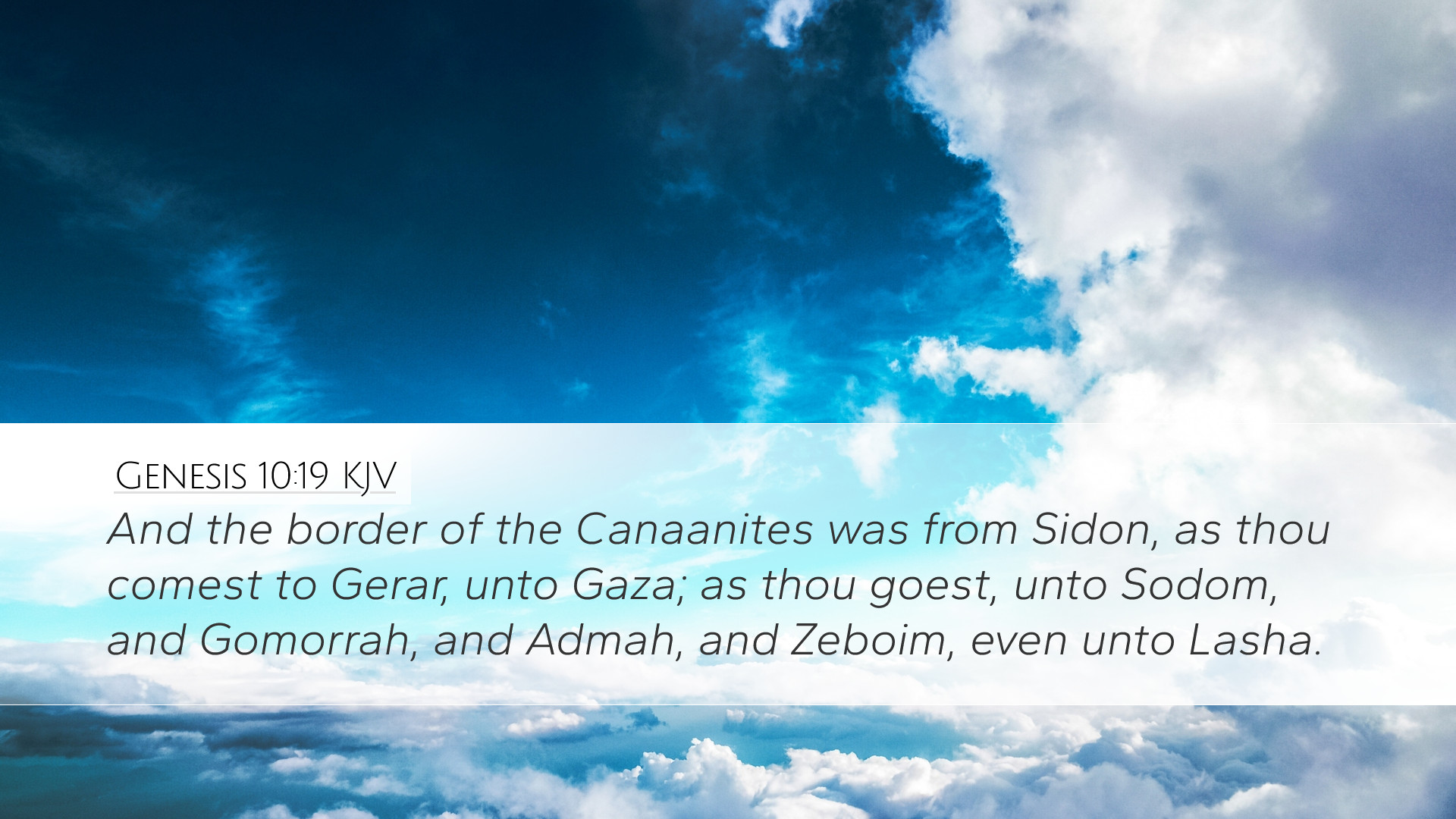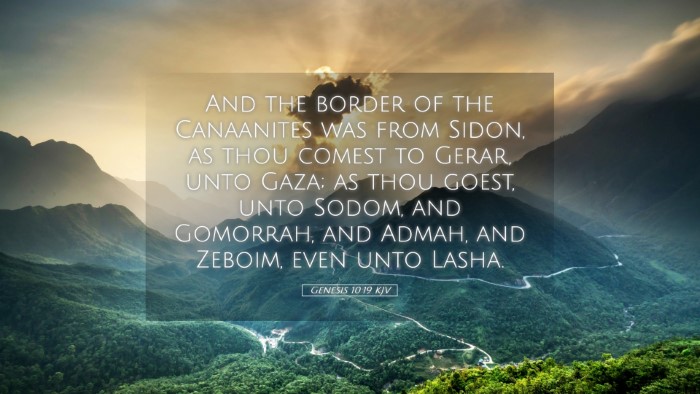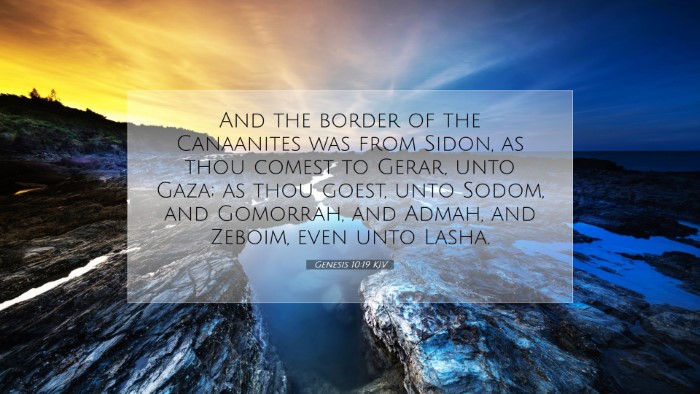Commentary on Genesis 10:19
Genesis 10:19 states: "And the border of the Canaanites was from Sidon, as thou comest to Gerar, unto Gaza; as thou goest, unto Sodom, and Gomorrah, and Admah, and Zeboim, even unto Lasha."
Overview
This verse is part of the Table of Nations and marks the boundary of the land occupied by the descendants of Canaan. It delineates the geographical area that would later bear significant importance in the biblical narrative, particularly regarding the events that unfolded in the cities of Sodom and Gomorrah.
Historical and Geographical Context
The passage not only identifies the inhabitants and their regions but forms a critical tie to the history of Israel and its surrounding nations. Understanding the locations mentioned provides insight into the demographic and cultural landscapes of the ancient Near East.
Canaan: The Land of Promise
Matthew Henry discusses Canaan as crucial, implying that its enumerated cities would become notorious for their wickedness yet pivotal in God's plan for Israel. The reference to cities like Sodom and Gomorrah forewarns the impending judgment due to moral decay.
Significance of Sidon, Gerar, and Gaza
- Sidon: A prominent ancient Phoenician city known for its trade and cultural influence.
- Gerar: Noted as a Philistine city, playing a recurring role in narratives involving Abraham and Isaac.
- Gaza: Another significant Philistine city, known for its strategic location and conflict with Israel.
Spiritual Implications
Albert Barnes emphasizes that this genealogy has profound theological implications, as it sets the stage for the subsequent divine interactions with humanity. The mention of cities defined by sin highlights God's dealings with humanity and His plans for redemption amidst judgment.
Judgment and Mercy
The cities mentioned are often regarded as examples of God's judgment due to their gross immorality. Adam Clarke comments on how they serve as a warning, showcasing the consequences of turning away from God's commandments. The narrative of God’s eventual destruction of these cities is a sobering reminder of divine justice.
Theological Reflections
This passage allows scholars and theologians to explore several themes:
- The Sovereignty of God: The geographical boundaries show God’s sovereign plan over nations and peoples.
- Sin and Judgment: The fate of Sodom and Gomorrah illustrates the serious consequences of sin, a theme echoed throughout Scripture.
- Hope for Redemption: Even amid judgment, the narrative thread points towards a future hope in redemption through Jesus Christ.
Exegetical Insights
From a textual standpoint, each city mentioned in this verse can be analyzed for its historical, cultural, and theological backdrop.
Cultural Practices
Understanding Canaanite practices is essential for interpreting the biblical narrative. The cities of Sodom and Gomorrah, for instance, are often cited for their extreme depravity, indicating the extent to which human sin can corrupt a society. Biblical historians note that the degeneracy of these cities serves not only as a historical account but also as a moral lesson.
Prophetic Reflections
Pastors and theologians can draw upon this verse in sermons and teachings that highlight the overarching narrative of sin and redemption in Scripture. The geographic context of Genesis 10:19 lays the groundwork for God's unfolding drama of salvation history.
Conclusion
Genesis 10:19, while succinct, encapsulates significant historical, theological, and moral lessons. It reveals the design of God in the arrangement of nations and the gravitas of divine justice against sin. Scholars and Bible students alike can find a wealth of insight into God’s character and His sovereign control over human history.


